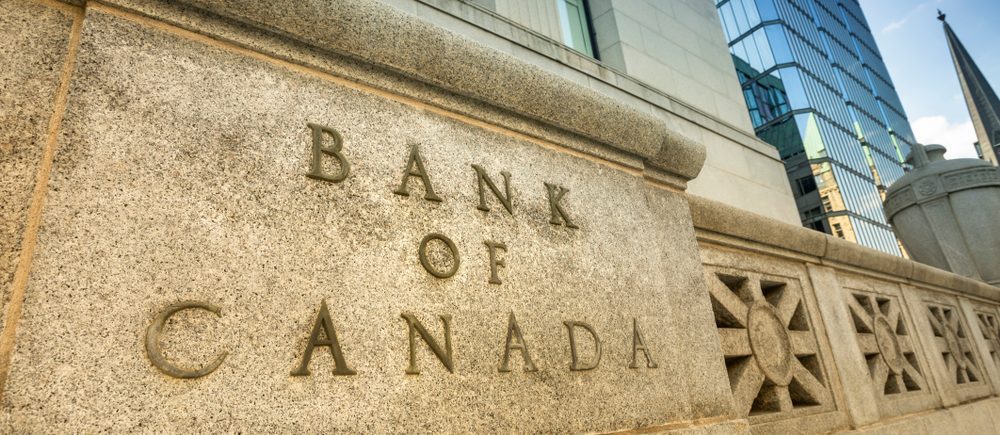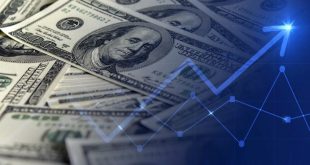Investors await fiscal policy announcement, Wednesday, for clues that Canada’s central bank is turning more hawkish. Led by Governor Tiff Macklem, the Bank of Canada is expected on Wednesday to raise its inflation forecast and to largely end stimulus related bond buying program, starting a countdown of sorts to the first interest rate hike in Canada since October 2018.
Investors and traders are betting that the Bank of Canada will have to effect interest rate hikes sooner than expected, in one of the hardest tests yet for BoC Governor Tiff Macklem.
Bets in the overnight trading market are increasingly skewed to move early next year, well ahead of the U. S. Federal Reserve.
Traders are now pricing in three hikes in Canada by the end of 2022, which will bring the rate policy to 1% from the current 0.25%. This is about 50 basis points higher than what the market was expecting just a month ago.
The shift in prices is increasingly at odds with Governor Macklem’s guidance that borrowing costs will not increase until the recession is absorbed and inflation is sustainably returned to the target range, however, the Bank of Canada has reiterated that it does not expect this to happen until the second half of next year.
Analysts warn that the uncertainty surrounding interest rate hike in Canada could undermine the effectiveness of the bank’s future guidance. One part of the shift in bets, which also occurred at the U. S. Federal Reserve and the European Central Bank, is due to price pressures which are proving to be steadier and even longer than expected.
Canadian inflation has stayed above the BoC’s 1%-to-3% target range for six straight months, climbing in September to an 18-year high of 4.4%, and the economy has regained all the jobs it lost during the pandemic.
Economists polled by Bloomberg expect the annual rate to reach 4.3%, the highest in nearly two decades and the sixth consecutive month of readings above the central bank’s 3% cap.
The Bank of Canada’s quarterly business expectations survey revealed a record 45% of respondents expect inflation to exceed 3% over the next two years. More than 85% see prices rising faster than the bank’s 2% target.
Acting a little sooner in the second half of 2022 looks like a probable action, with first rate hike as early as July, rather than October and would be widely understood as a justifiable action.
This could help address the risk that persistent inflationary pressures lead to a deeper and more sustained upward shift in inflation expectations.
While insisting that it is temporary, Governor Macklem said after a speech on 7 October that price pressures have become more persistent than the bank initially expected.
Governor Macklem repeated this again last week. “It is likely that the inflation measures will take a little longer to come back”, he told reporters during a video roundtable from Washington after the annual meetings of the International Monetary Fund.
The next decision of the bank is scheduled for 27 October. No move is expected on borrowing costs, but Macklem is likely to reduce the weekly purchase of Canadian government bonds to C$1 billion ($810 million) from the current pace of C$2 billion.
All eyes will be focused on any language changes on interest rate guidance, as well as inflation expectations in the latest quarterly economic outlook.
The central bank has pledged to keep rates at a record low 0.25% until economic limp is absorbed, which would happen in the second half of 2022 in its latest forecast, and has long maintained that the factors pushing up inflation are temporary.
Money markets are set to see a different track ahead, pricing in the first hike by April and nearly 100 basis points of tightening in total next year, up from 35 basis points in September. Investors see rates rising sooner in other large economies as well.
If the BoC were to hike before the second half of next year, it would likely adjust its guidance in advance. The bank would not want investor expectations to stray too far from its outlook for fear of market turbulence.
The Canadian dollar has climbed in recent days to a four-month high near 1.23 per greenback, or 81.30 U.S. cents, while the gap between Canadian and U.S. 2-year yields has doubled since last month to 41 basis points in favor of the Canadian bond.

 Noor Trends News, Technical Analysis, Educational Tools and Recommendations
Noor Trends News, Technical Analysis, Educational Tools and Recommendations




